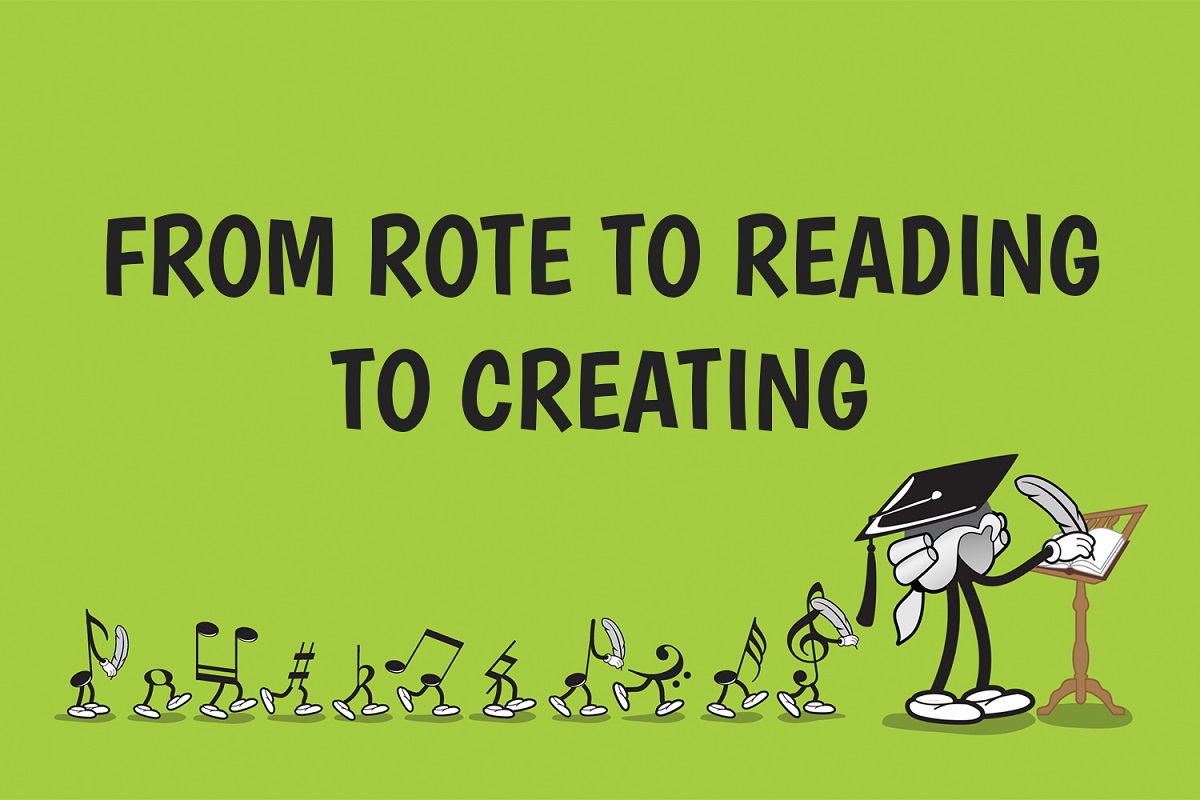From Rote to Reading to Creating

Like all experienced teachers, my skills have evolved over the years. But my ability to teach composition has more than evolved… it has actually begun to exist! 1
Me, until a few years ago: DID NOT COMPOSE OR TEACH COMPOSITION
Me, now: LOVE COMPOSING AND TEACHING COMPOSITION
So, how did this happen?
Quick Background
I’ve blogged about how and why I started composing my Rote Repertoire series, but here is a super quick summary:
- I found that using rote teaching does not prevent sight reading, it helps sight reading – when used in conjunction with a score
- I wrote some short, ergonomic, highly patterned pieces for my students
- I wrote each piece in three levels, each slightly different, to encourage score reading
- I realised that I could easily ask the student to compose a ‘Level 4’ of their own.
So, the process of teaching Levels 1-3, for the purpose of making sight reading accessible, in fact led to composing Level 4, without fear and with enthusiasm. Huge win!
Why is Composing Important?
When a student gets creative with a piece they are playing, it is a sign of true engagement with music. They are hooked.
Were you ever, as a student, encouraged to change parts of the pieces you were learning? I certainly wasn’t… this would have been almost blasphemous to my very conservative Russian piano teacher! I played the notes on the page, and that was it.
However, now I take much pleasure, when a student is playing a piece ‘incorrectly’, informing them that they have made their own arrangement! ‘This is great!’ I exclaim, ‘and we will come back to that! But for now, let’s see what [insert composer’s name here] actually wanted you to play.’ This plants the idea that they have ‘permission’ to make changes, as part of their own creative process.
Rote Repertoire gives students the perfect framework for composing. The Level 3 piece is a springboard for their own composition. They have already played three versions of the piece, so it’s easy to make more changes!
Having a framework
Below are lots of examples of ‘Level 4’ compositions from my students. Most of the time, they could go home and come up with the Level 4 on their own. Occasionally, I showed my students examples of what they could do (there’s a ‘Level 4 ideas’ video that comes with every piece I have written). But I would find that the majority the time, my students would chuck my ideas out the window! Another huge win!
Here is the first example, a piece called Swing It.
This is an excellent piece for introducing students to swing rhythm. It’s an easy piece that contains great dynamic changes too.
In this video, you’ll first see the Level 3 ‘final’ version that is available in the pack, and then you’ll hear Marie’s awesome take on it.
The next three examples feature my students Isaac, Alexandra, Jed and Elsie.
Here is a piece called Changing Moods. This piece keeps swapping between major and minor tonalities.
In this video you’ll see the Level 3 version and then you’ll hear Alexandra, Isaac and Jed’s versions. They have very different endings!
Next up is a very calm piece called Galaxy. It is great for outer space studio themes! You’ll hear Alexandra and Isaac’s versions after the Level 3 ‘main’ version.
Another example is At the Lake. This was featured in my MTNA presentation in 2020 (online). You’ll once again hear the Level 3 piece, followed by Isaac, Alexandra and Elsie.
And finally, my very favourite piece of the whole series, Revving Up. This is a fast, fun jazzy piece which sounds super impressive but is easy and comfortable to play.
I can’t really take credit for this Level 4. My student Jeremy blew me away!
So, as someone who came late to composing and wishes I had discovered it earlier, I am hosting a webinar all about making composing EASY for your students (even if you don’t find it easy!). We will all try our hand at composing and I’ll go through all my strategies for helping even your most reluctant student.
It’s on August 27 at 10am Sydney time (which is Aug 26 in the US) but it doesn’t matter whether you’re free at that time or not – just register and you’ll get the replay and some excellent freebies!
Register now for this really helpful and interactive webinar! 😊

Hello Suzanne,
How do I order Level 1 rote? I have an 11 year old austic student. I’ve started him on “Piano Adventures Primary Level” by Faber and Faber. I came across your video demonstrating the book “From Rote to reading to creating” —- I immediately knew this book would help my student.
Thank you for any guidance on ordering this book.
Hi Alyson, Samantha here! The best thing to do is sign up on the roterepertoire.com site – which I think you have already done! There are hundreds of pieces to choose from, all presented in the style of teaching Level 1 by rote, then levels 2 and 3 by referring to the score.